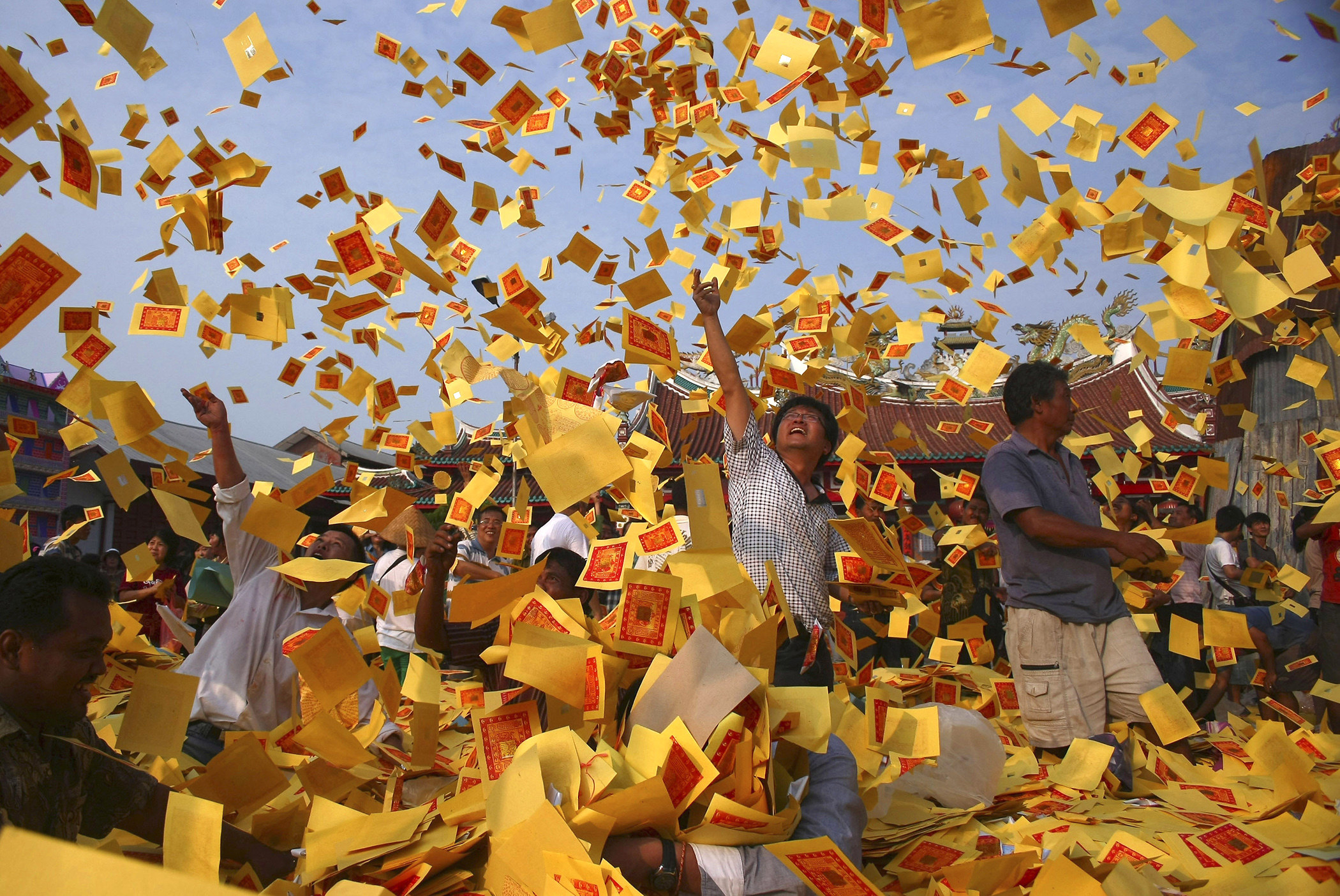15 Graves, Grave digging, Ancestors and Luck
Aevyn Barnett
Key terms
- Ancestor
- Luck
- Grave digging
- Tombs
In this chapter we will be discussing death in ancient and modern-day China. When it comes to the topic of death, there are four main areas to look at: graves (or tombs), grave digging, luck, and ancestors. Each of these subtopics are an aspect of the overall concept of death in Chinese culture.
Grave digging
In Singapore the government requires lots of land for commercial use. Because of this, bodies are only guaranteed to stay buried in cemeteries for up to 20 years. After this time, there is the chance that workers called gravediggers will exhume the graves. This means they dig up all of the bones (the casket has usually disintegrated by then) and cart them away, leaving the space to be used for building. The gravediggers work long hours and get very dirty. The work is very difficult and physically taxing, especially when some of the graves get flooded. The gravediggers do not work year round. During the months when they do not work, times can get very tough, which is why they never turn down a job during their working months.[1]

Luck
So where does luck fit in all of this? Many Singaporeans today, as well as East Asian’s from generations past, believe in luck, both good and bad. Most see grave digging as a practice that will bring bad luck to the gravedigger for disturbing the resting place of an ancestor. Because of this, the families of the dead that are being dug up often give small talismans of good luck charms to the gravediggers to protect them. Many gravediggers also purchase their own luck charms to ward off any evil that may follow their actions.[2]

Ancestors
Speaking of ancestors, they are a huge deal in China and neighboring countries. Every year there is a giant festival, the Hungry Ghost festival, to honor the ancestors, where people burn sacrifices of food and paper money, to send it to their deceased family members and ancestors. During this time they also pray a lot and have big feasts. There are also auctions of good luck charms. One gravedigger collects charms shaped like coffins or other objects related to the dead to protect him while he does his work.[3]
Ancestors can also bring good luck and offer blessings. People will often ask ancestors for advice or to tell them which day to get married etc.

Graves
And lastly: What is in these graves? Well, most of the graves being dug up are those of common people, so they only include the body and maybe a few small objects. However, tombs of higher up members of society such as the wealthy or royalty were much more elaborate. These tombs included statues of slaves and warriors to protect and serve the dead person in their next life. They may also include dishes, books, pets, and artwork to entertain the deceased.

Sources for further reference
Cook, Constance A. Death in Ancient China: The Tale of One Man’s Journey. China Studies 8. Leiden ; Brill, 2006. https://doi.org/10.1163/9789047410638.
Hui, Tan Boon, and Brenda S. A. Yeoh. “The ‘Remains of the Dead’: Spatial Politics of Nation-Building in Post-War Singapore.” Human Ecology Review 9, no. 1 (2002): 1–13.
S. A. Yeoh, “The Body After Death Place,Tradition and the Nation-State in Singapore.” In Embodied Geographies: Spaces, Bodies and Rites of Passage, edited by Elizabeth Kenworthy Teather, 131-241. London: Routledge, 1999.
